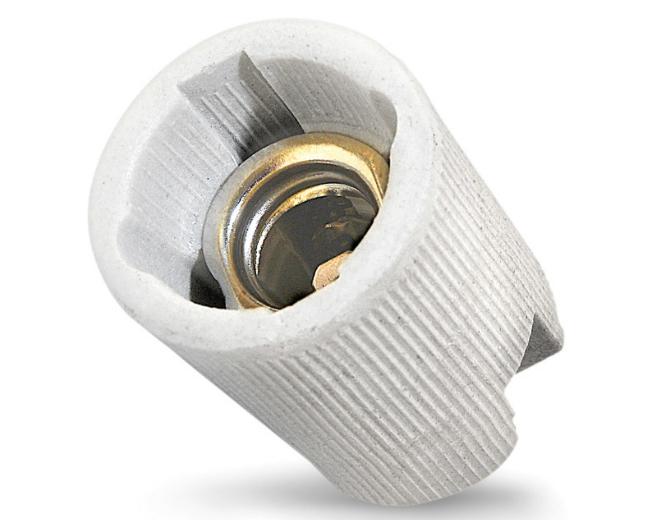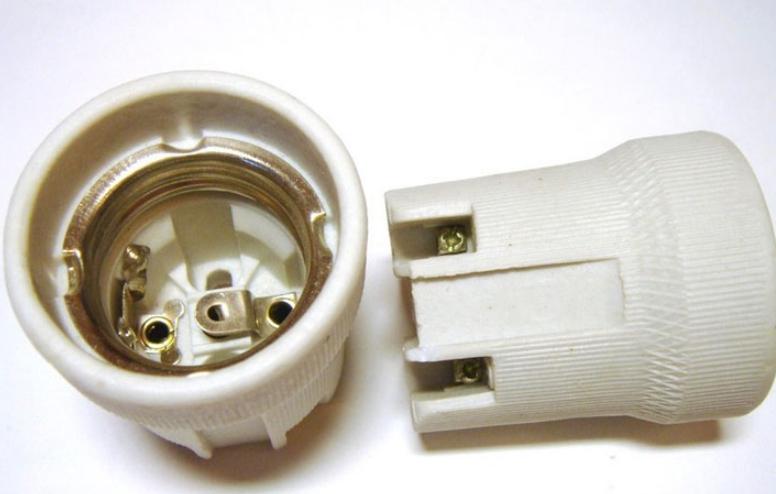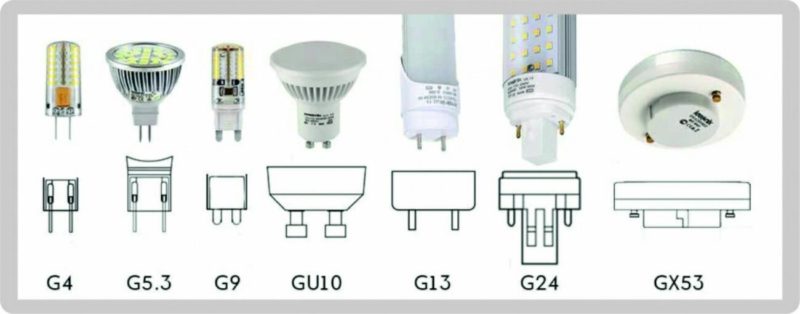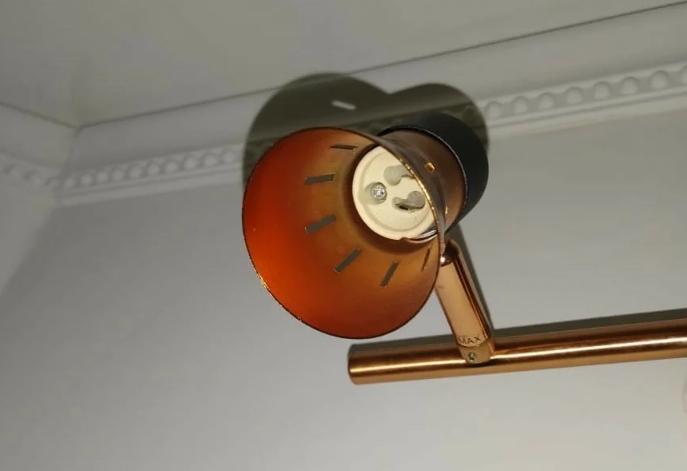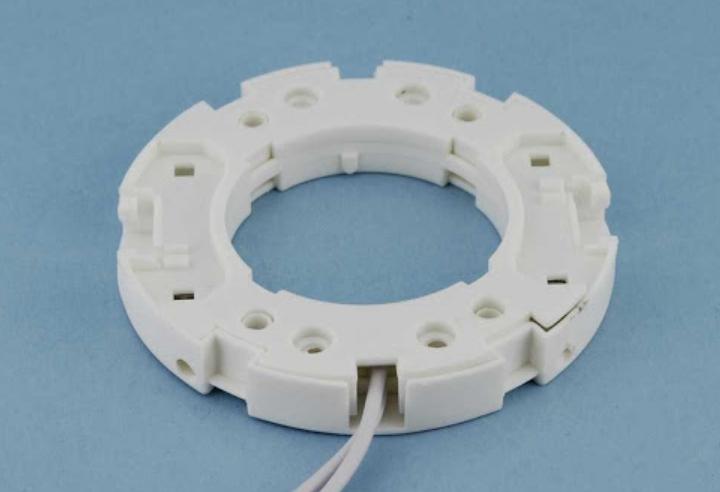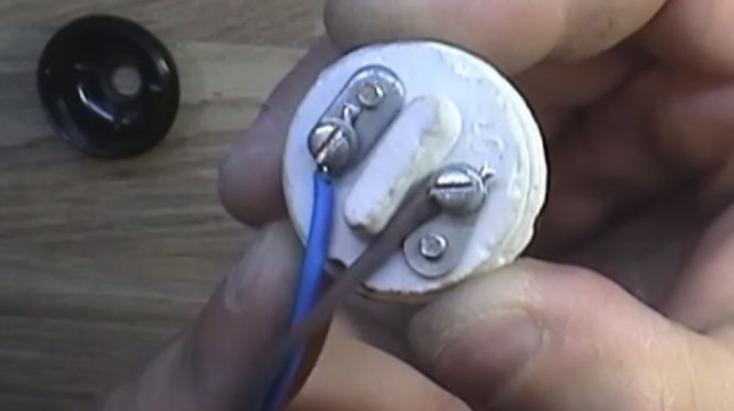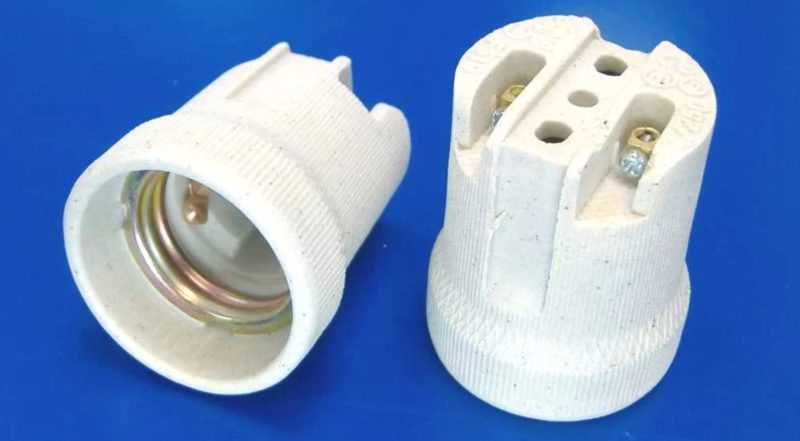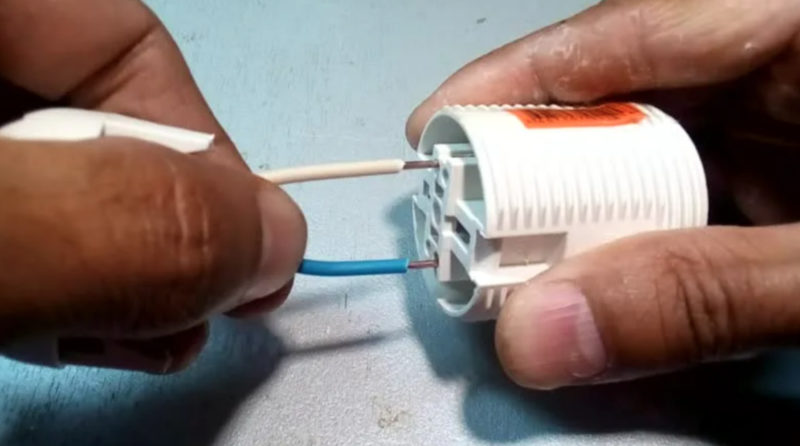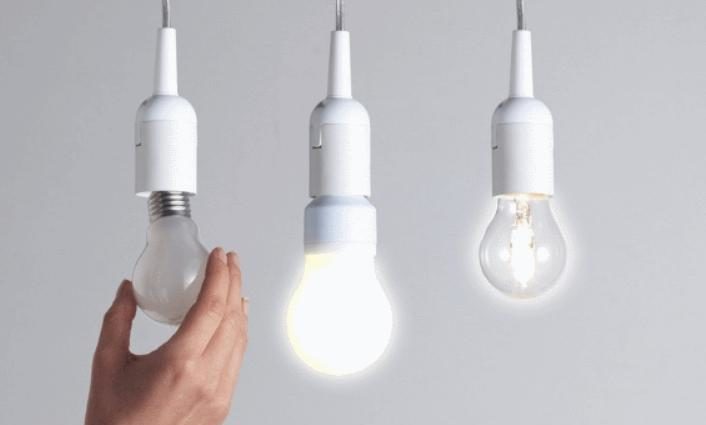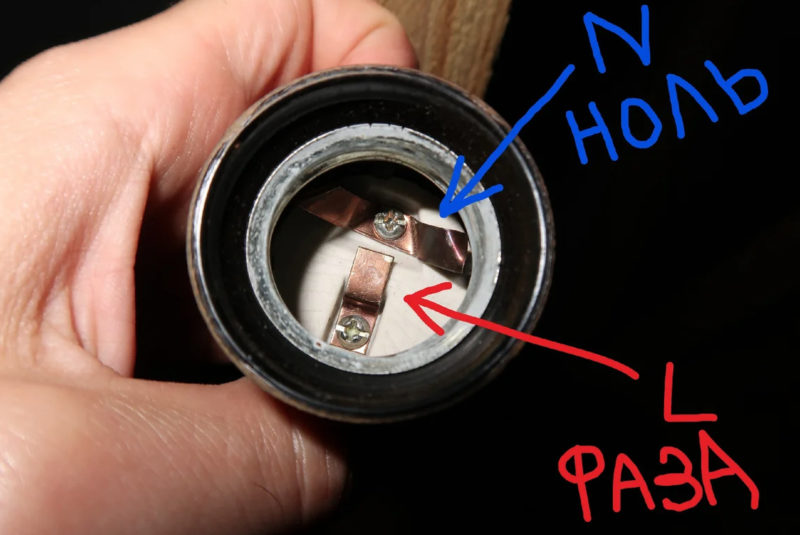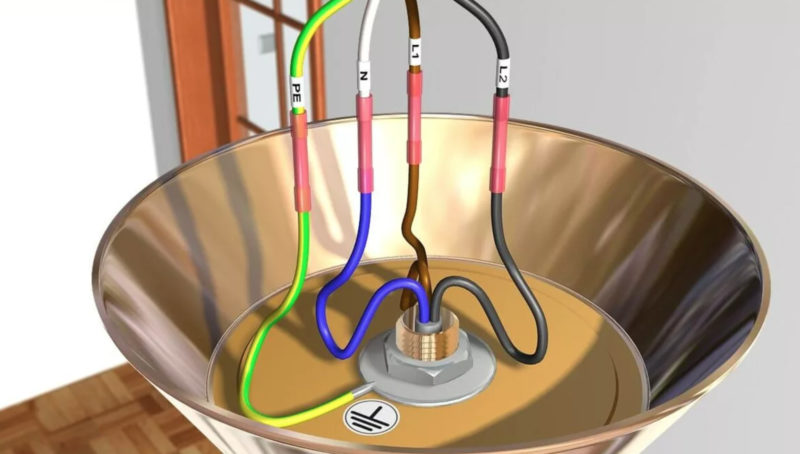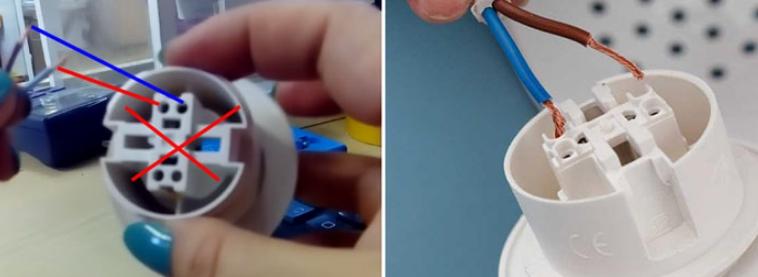How to wire a light bulb socket
To connect the socket to the wires is not difficult, if you know the features of the design and follow the uncomplicated instructions. There are several basic types of products, so mounts can vary. But to understand it is not difficult, if you study the structure of cartridges and understand all the nuances of installation.
Types and marking of cartridges
All varieties used now can be divided into two groups - screw and pin. The first option involves screwing in the bulb on the Edison thread, the second - snapping special pins into the landing place. Requirements for quality and performance are prescribed in GOST.
Screw cartridges are marked with the letter "E", the number indicates the diameter of the threaded part. Most often one of three varieties is used:
- E14, popularly called "Mignon". The narrow base, designed for low-wattage lamps, is used in most new chandeliers. Ideal for LED light sources and incandescent bulbs up to 60 watts. The lamp power limit is usually 440W with a maximum current of 2A.Ceramic socket E14.
- Е27. The most common variant today, which used to be put in all kinds of luminaires. It is designed for standard incandescent bulbs, you can put any other options with the appropriate size socket. The maximum power of light bulbs for this type is 880 W at, the current intensity - no more than 4 A.E27 sockets are most common.
- Е40. Made only of ceramic, intended for street lighting and can be used with bulbs up to 3500W and current up to 16A.
Pin or pin sockets are different in that the lamps are not screwed into them, but are inserted into the base and fixed by protruding contacts. They are marked with the letter "G", the number indicates the distance between the contact elements. The main varieties are:
- G4, G5.3, G6.35, G8 and G10 have exactly the same design and differ only in the distance between the contacts. Suitable for compact halogen and LED bulbs, used in chandeliers and spotlights. Designed for light sources up to 60 W and a load current not exceeding 5 A.Variety of pin bases of type G.
- G9. Designed for light sources with flat contacts.
- GU10 is distinguished by the fact that after the insertion of contacts, they slightly rotate and thus are fixed in the seating place.GU10 socket in the luminaire.
- GX53. Flat socket designed for installation in stretch ceilings and suspended structures. Allows you to save space if space is limited.The GX53 flat socket is different from traditional sockets.
By the way! When choosing, you need to check the actual characteristics of the socket with the standard, they are often an order of magnitude lower.
How to connect an electrical socket
Connecting a light bulb socket depends on the type of attachment. There are several types, each has its own characteristics:
- Connection using screws. In this case, the center and side contacts are attached on one side, on the reverse side the wire is connected. For this purpose, its ends are protected by a few centimeters and loops are made from them according to the size of the screws used. They are placed on the seats and pressed with fasteners so as to ensure a secure fit and to prevent the screw clamp from loosening over time.The screw clamp is simple and reliable.
- Wires are connected by means of threaded terminals. This type is distinguished by the fact that the attachment is already built into the body of the cartridge. You need to unscrew the screws to open the hole. In it is inserted the end of the wire, which is previously stripped to the required distance. When attaching it is necessary to ensure that the wire is exactly under the screw and securely clamped in the mounting hole. It should be clamped as far as it will go to ensure good contact.View of the socket with screw-type terminals.
- The connection in the screwless socket is different from the previous ones. It has two pairs of slots with spring-loaded brass clips inside. The paired arrangement is necessary in chandeliers with several cartridges, because voltage is applied to one. The others are connected in series by small jumpers. If the wires are stranded, it is difficult to insert them, it is best to strip the end of about 10 mm in length. Then they are deburred with a soldering iron, then it is not difficult to insert the wire.Self-clamping connection.
If there is no soldering iron at hand, you can insert the multicore version with a small screwdriver or a nail of suitable diameter. You need to squeeze the retainer, place the wire next to it and remove the spacer to securely fix the contact.
If you need to remove the old chuck and connect the new one, you may have trouble removing the wire from the screwless clamp. If it is possible to insert a screwdriver or other thin element, you should do exactly that. When there is nothing suitable at hand, it is necessary to take hold of the wire near the mount and with moderate force pull it toward you, while shaking it from side to side.
How to plug in a socket
If for some reason it is necessary to power the lamp and put the socket (e.g., when repairing), it is important to do it correctly. To do this, the socket is disassembled and additional wires are connected to the contacts. Phase in the lamp socket must not touch the zero, so the connection point for reliability is better to wrap with insulating tape.
This solution can only be used as a temporary solution. You should not connect equipment that consumes a lot of energy to such a socket, as this will lead to overheating of the socket and its deformation.
From the video you will learn how to connect the cartridge to the wires and socket.
Ways to attach electrical sockets in chandeliers and light fixtures
Most often it is necessary to connect nodes that are located in the lighting equipment. This imposes certain requirements depending on the mounting option and design of the lighting fixture. Most often the following methods are used:
- Fixing the socket in the lighting fixture by the conductive wire is not allowed, as it is not possible for the load to fall on this element. The exception is the use of cable in reinforced insulation, designed for certain loads. But still, you should not hang massive chandeliers with this method. Connection of the lamp socket is made in the standard order. The wire is pulled through the hole in the back and is fixed in a fixed position by a special screw, located on the side. It should be screwed so as to secure the wire, but at the same time not to deform it.
- Installing the connection of the chandelier socket in chandeliers with a supporting element in the form of a tube is much easier. Here the load is on the tubular element, inside which the wire is pulled, which makes the construction much neater. The cable is pulled out with a small margin and connected to the socket as usual. In the upper part it is connected to the mains through the socket, the place of connection is covered by a decorative cap.
- Installation of the bulb holder at the expense of the sleeve is used in both chandeliers and wall lamps, as well as table lamps. For this purpose, there is a threaded element at the top, which is inserted into the hole and on top is fixed with a nut of the appropriate size. It is best if the mount is metal, the plastic ones loosen over time and it is not possible to repair them. The only thing that can help is replacement of the wholeAs such parts are not sold separately.
- Fixing options with screwless clamps is even easier. This is a modern solution that appeared recently, it is increasingly common in chandeliers. In this case, you must first thread the lower part of the element, through which the wire is passed, usually two-core. Then it is connected to the contacts and the upper part is carefully aligned with the latches and snapped until it stops. Such a system holds the element securely without additional fasteners.
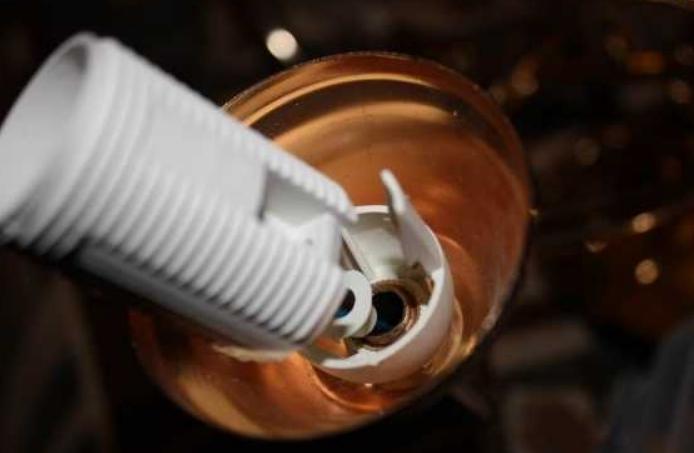
If you need to remove the screwless socket, you will need a thin flat screwdriver. With its help, remove first one retainer, then the second, and then carefully remove the upper part from the seat.
How to connect the old-style carbolite cartridges
This is the most common option. The socket resembles plastic and consists of a bottom with a hole for the cable, a body with a thread and a ceramic insert for connection. To do the job correctly, it is necessary to remember simple tips:
- Find out which core is the phase, and which is the zero. This is important for the safe use of the lamps, you can check with an indicator screwdriver. The phase is always connected to the center fixtureThis is for safety reasons. The zero goes to the side terminal. The main thing is to fix the cable ends securely and avoid contact with the bare parts.It is important not to mix up the phase and neutral wire when connecting.
- If a three-core wire is used for connection, it is important to position the ground correctly. Most often there is a place on the body of the chandelier for its attachment, marked by the appropriate symbol. Since it is located to the side, the length of the grounding wire should be much longer. If there is no fastener, the end attaches to any place on the chassis. Some ceramic cartridges have room for a third wire as well, this makes the job easier.The yellow-green wire (PE) is the ground.
- To securely fasten the stranded wire, you need to prepare it. To do this, remove the insulation from the ends and form loops of suitable size. To ensure that they remain intact and are not deformed, they should be soldered and the strands bonded together. This will ensure good contact and maintain the connection even if the cartridge is removed multiple times.
All collapsible versions are wired this way, the design is usually the same.
The video clearly shows how to connect a light bulb holder to a PVS cable.
Common mistakes
There are a few basic mistakes made by those with little experience in connecting socket fixtures:
- Mounting chandeliers before installing the sockets. It is much more convenient to do the work on the table and only then hang the equipment.
- Fixing the contacts of stranded wires without tinning them. This option is not reliable and the contact inevitably deteriorates over time.
- Connecting the phase to the side contact. This not only affects the operation of the lamp badly, but also creates a danger to humans when replacing it.
- Often overlooked are the screws that hold the contact plates at the top of the ceramic insert. If they are not clamped well, the contact will be poor, leading to constant overheating of the cartridge during operation.Do not insert different wires into the holes next to each other.
- Inserting zero and phase wires into parallel sockets on the self-clamping chuck. This causes a short circuit when switched on.
- Replacement of the assembly due to a poorly pressed central contact. Often this element is bent and does not press against the base. But if it is carefully bent, the malfunction can be eliminated without installing a new part.
It is not difficult to connect the bulb socket to the wires, as there are few connection options and they are all simple. The main thing is to comply with safety standards and exclude the shorting of differently polar wires.
